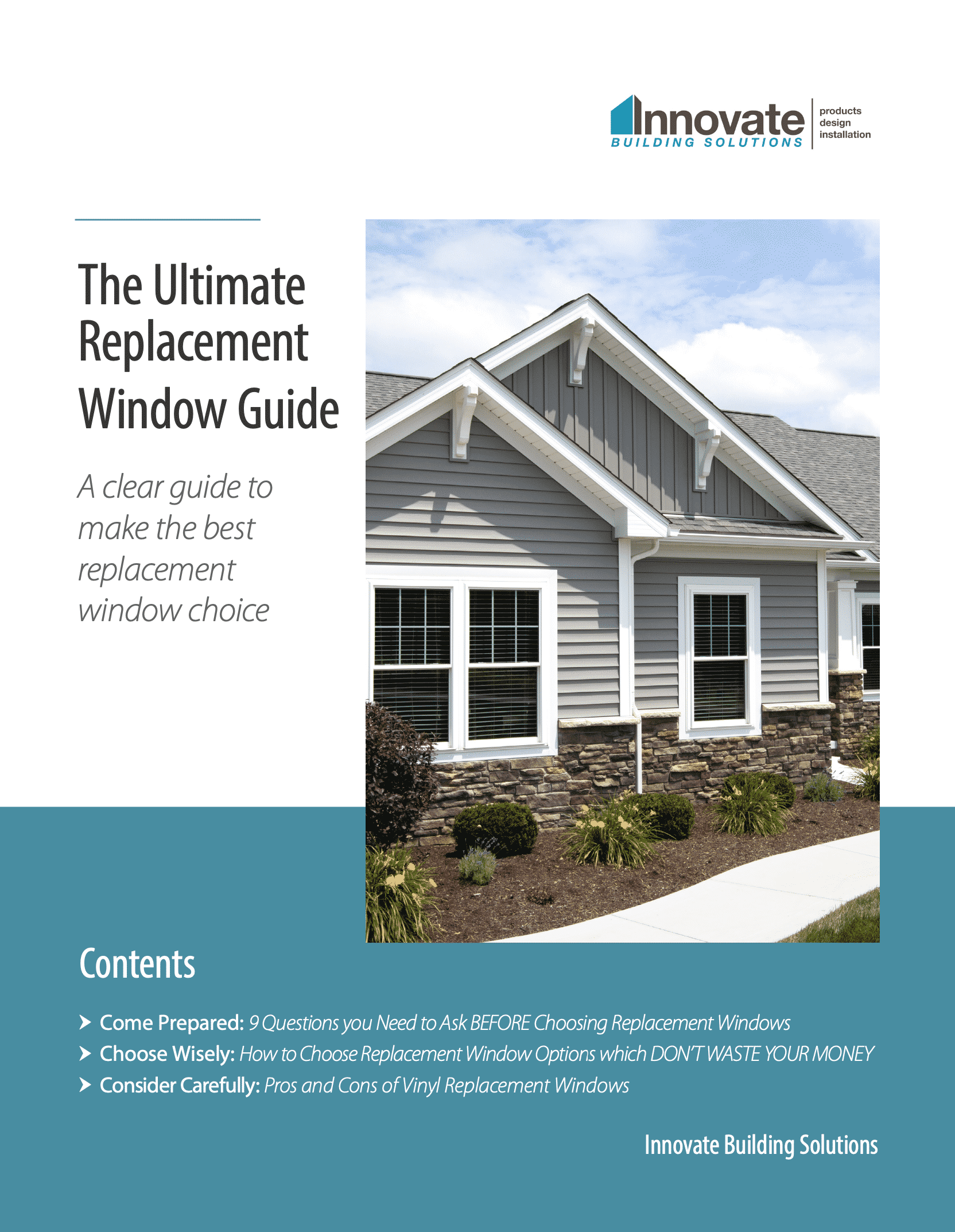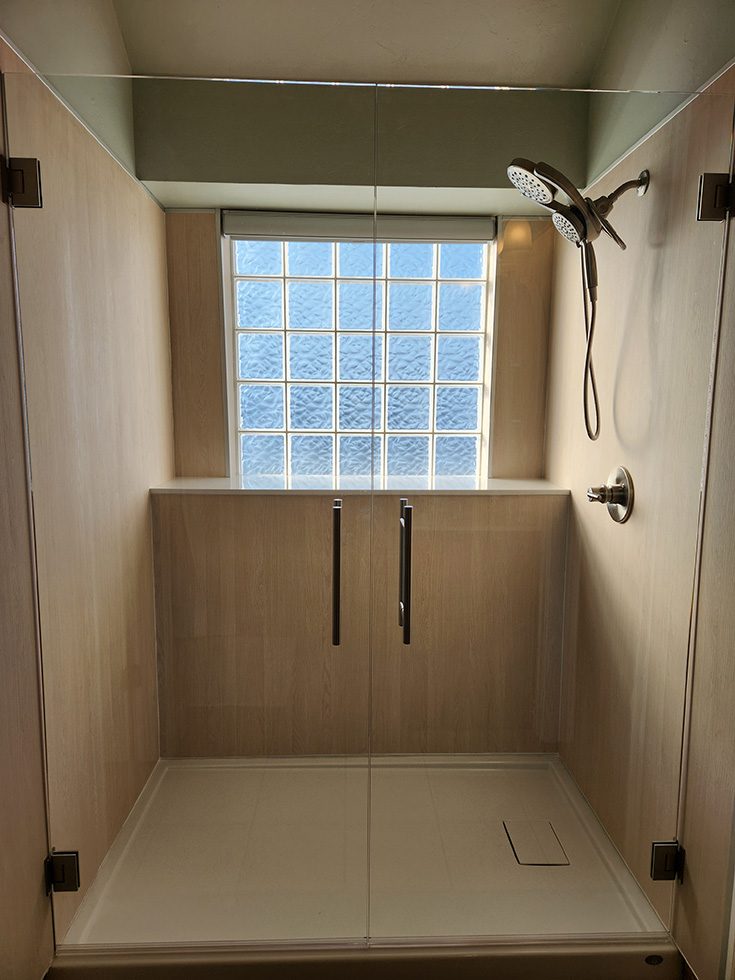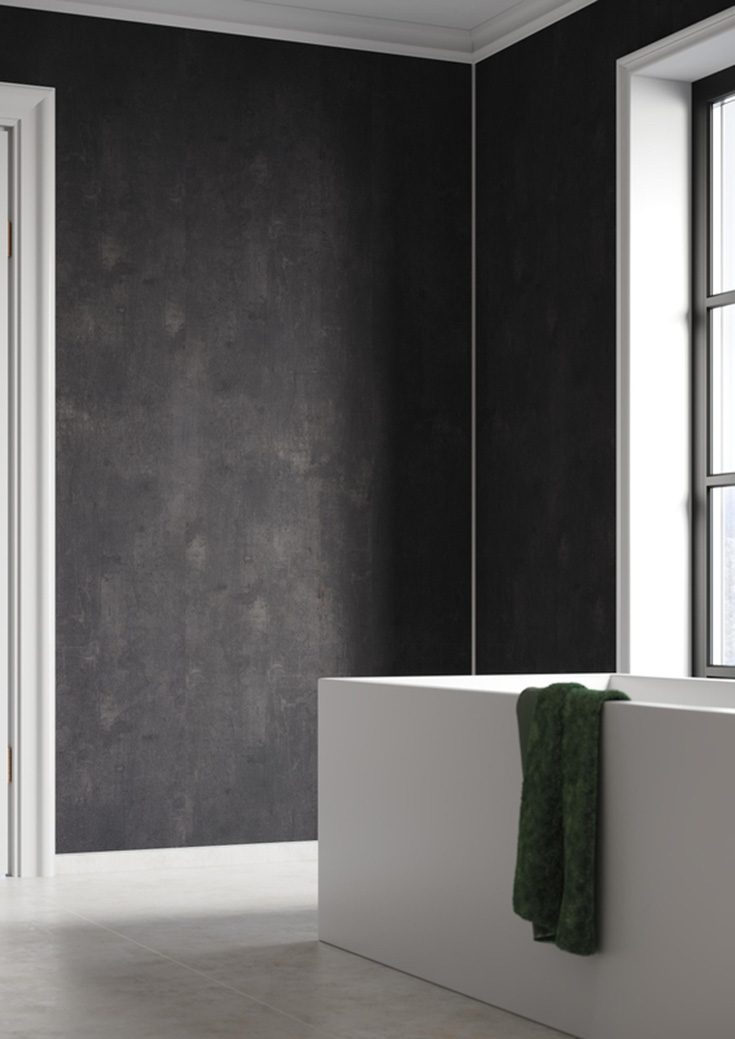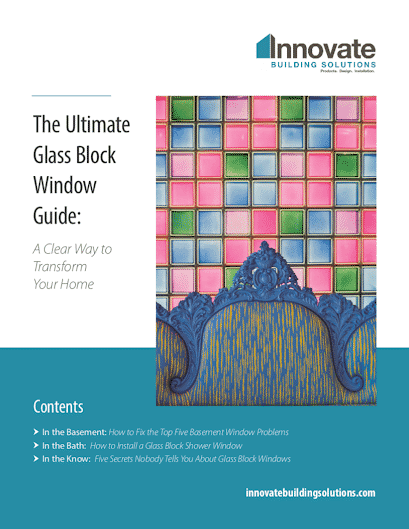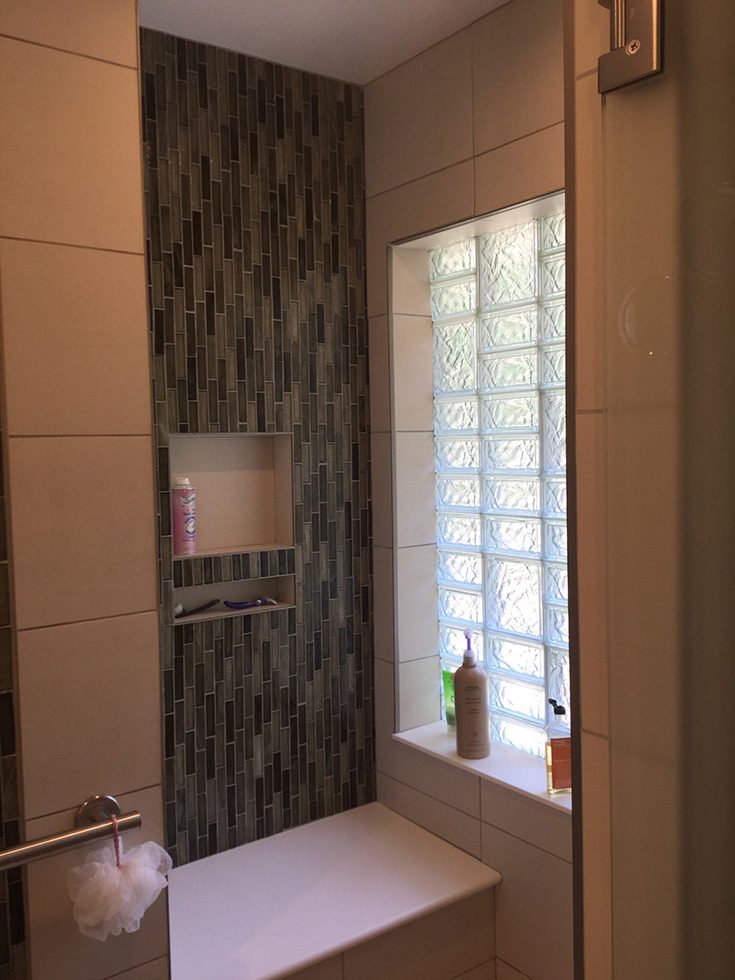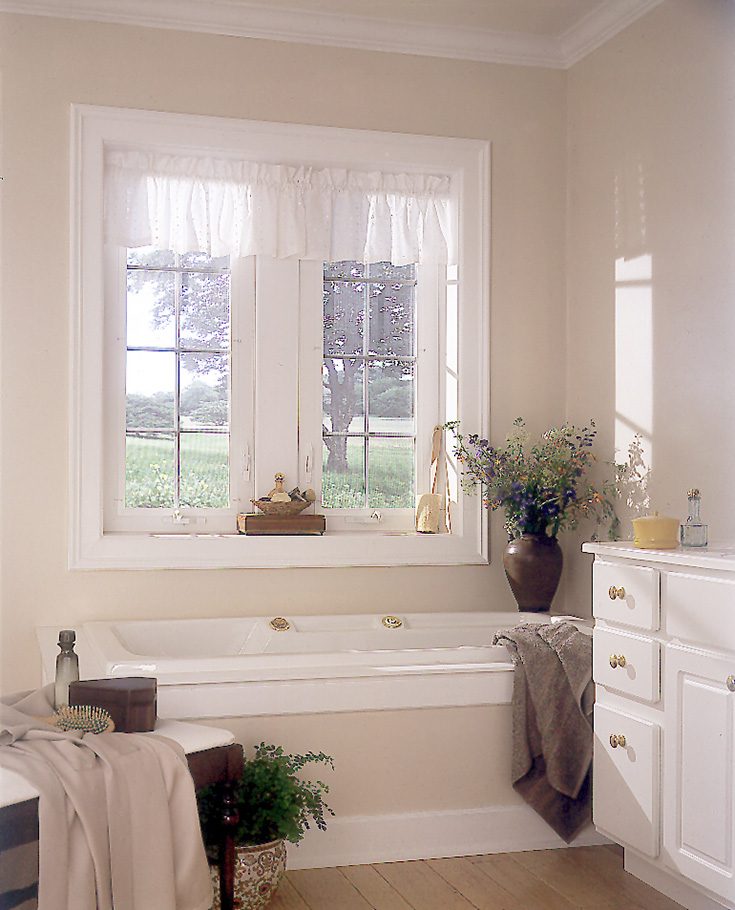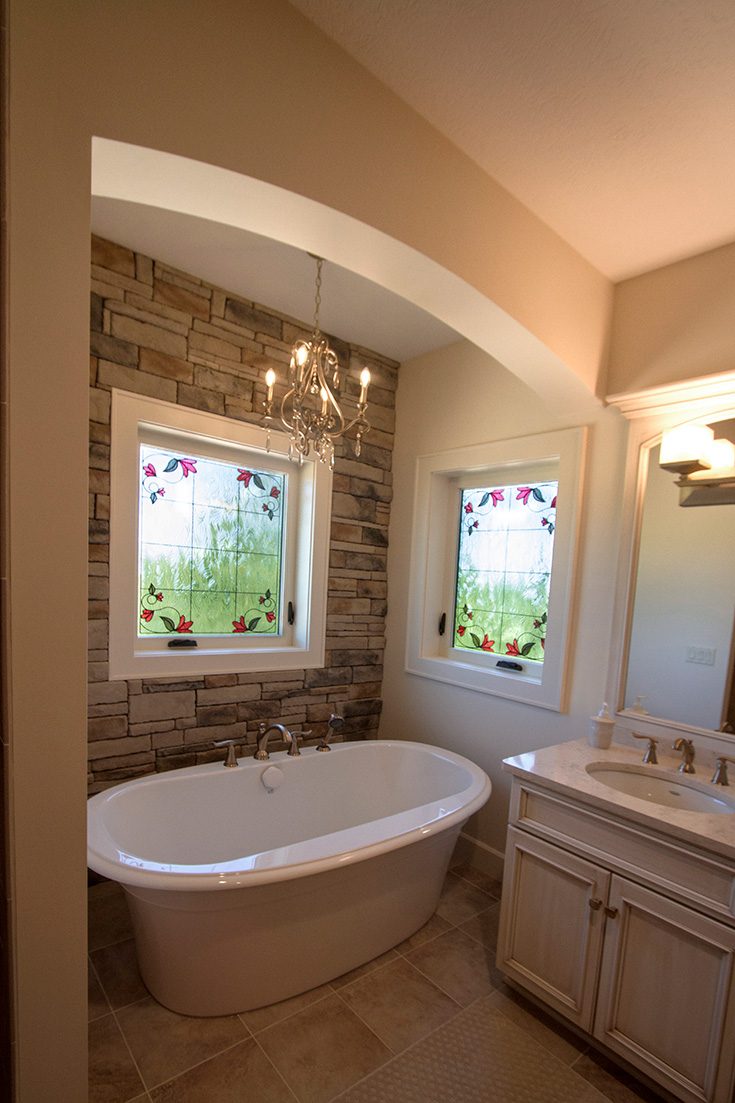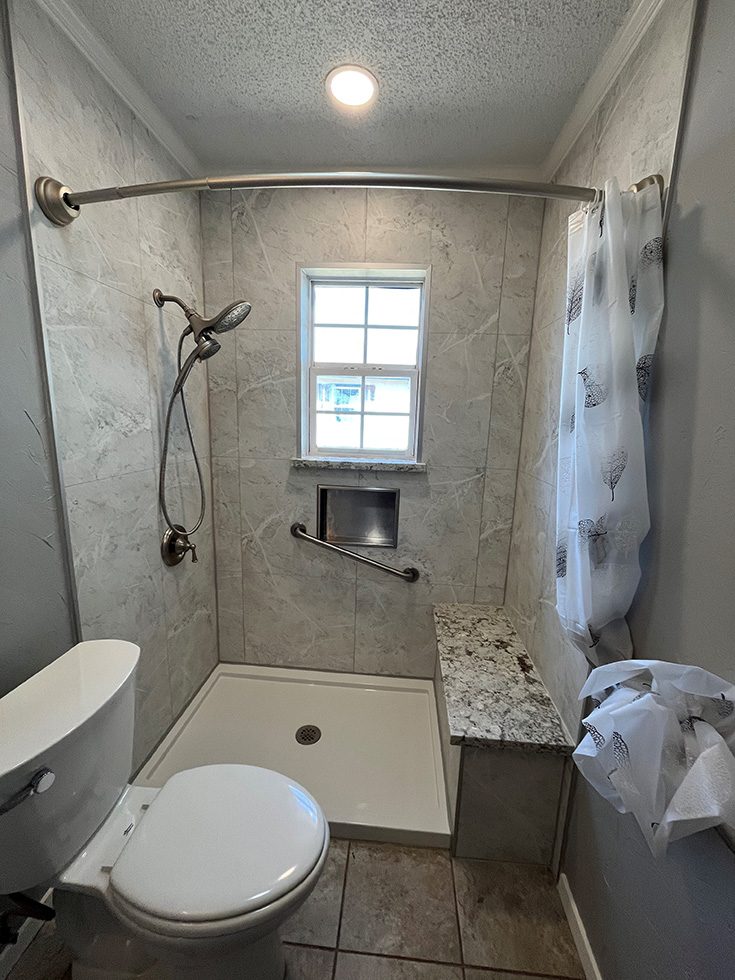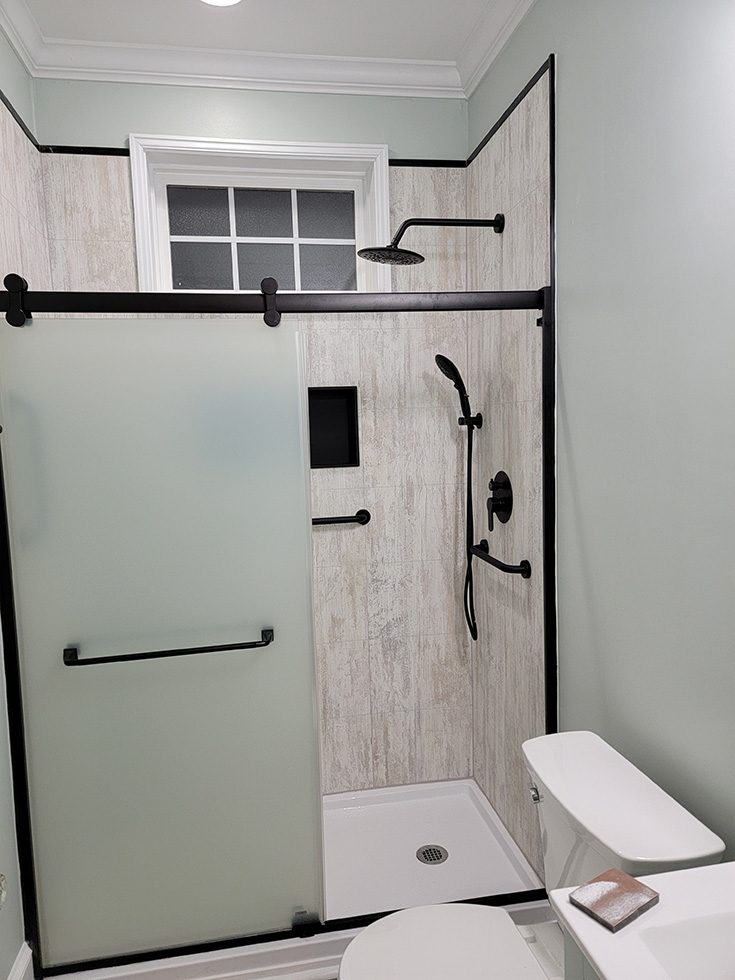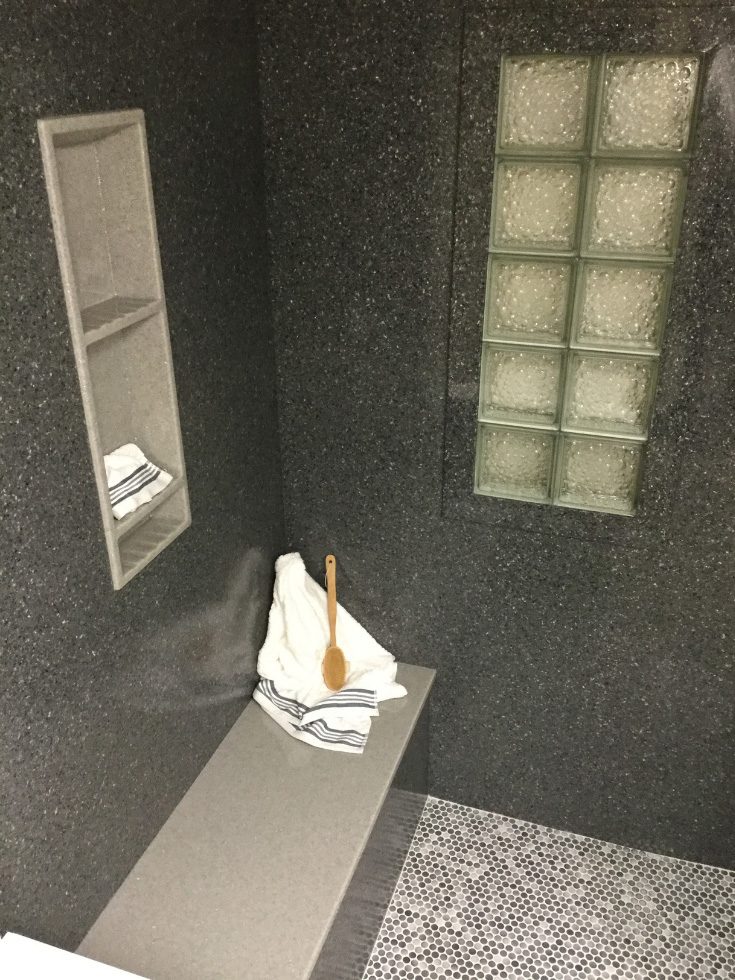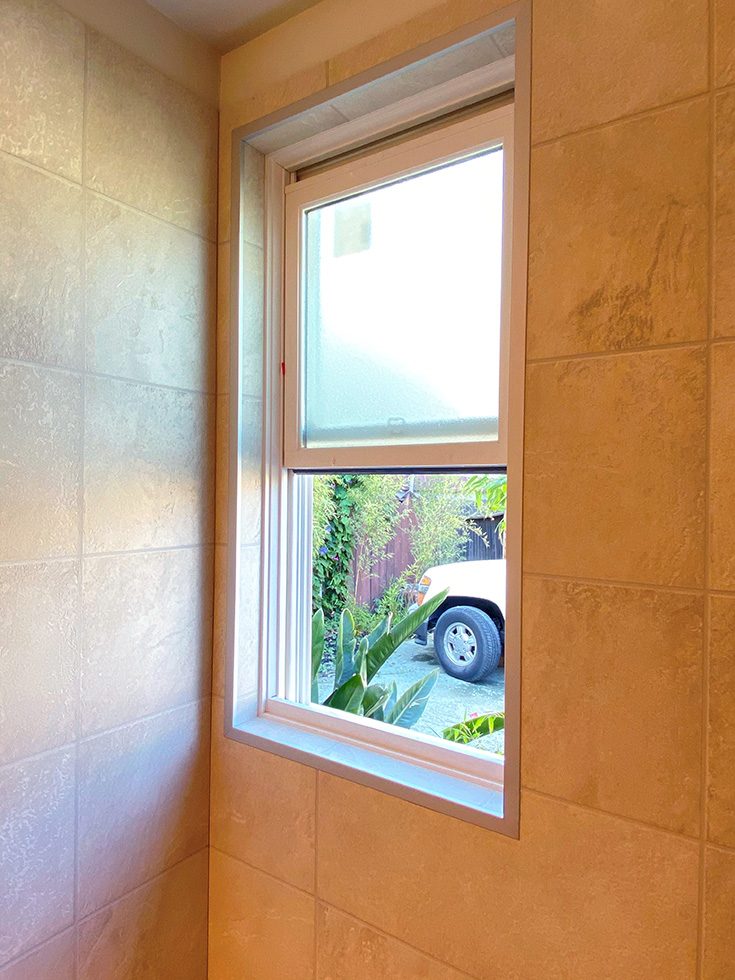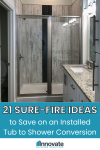How to Remodel a Bathroom with a Window in the Shower or Tub Alcove
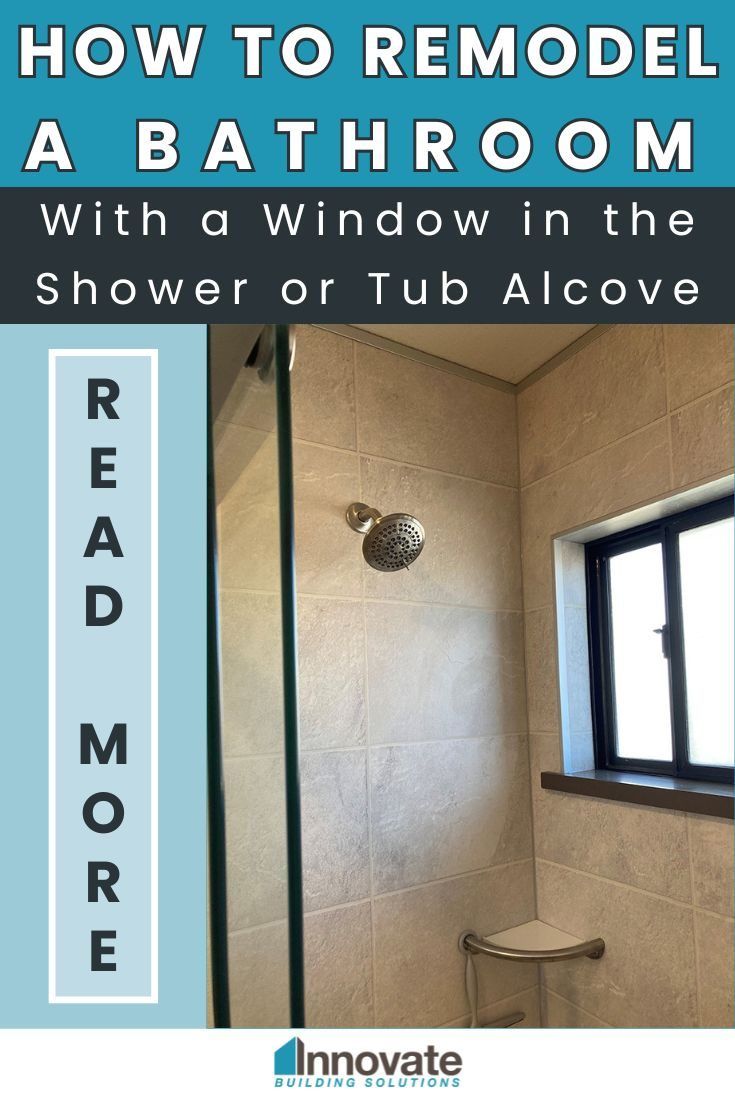
Do you have a love/hate relationship with the window which is smack-dab in the middle of your tub/shower alcove enclosure today?
Perhaps you love the fact it brings in light, and lets you air out the bathroom (especially if it’s a hall bathroom used by your stink-eeee teenage boys!).
But by the same token you may hate this window. It offers no privacy. Or the wood around it are deteriorated, or there’s mold and mildew around the window frames. Or possibly the windows are leaking air around the rusted metal frames or rotten wood frames. YUCK!
So, now that you’re looking to remodel (and FINALLY upgrade your tub or shower alcove) you’re debating what to do about this window. And how can you put an end to your love/hate relationship with it.
Should this window stay, or should it go? And if it goes, should you replace it with another type of window? And if you put in a new window how can you make sure you DO NOT repeat the mistakes of the past?
If these are questions you must decide before ‘passing go’ and dishing out more than $200 for your bathroom remodel (don’t you wish it was only $200…in Monopoly money!),’ you’ve got to first figure out how to remodel your bathroom with a window in the shower or tub alcove. And this is exactly what this article is about.
And I’ll ‘fess up’ and tell you I’m a fan of keeping the window. And no, it’s NOT only because I have a business which wholesales and installs bathroom products and bathroom windows!
So, let’s look at why I think it’s a big mistake to cover a tub or shower alcove window, and the reasons it’s smart to keep a shower or tub window. Then I’ll look at how to choose the right alcove window, and how to waterproof it as well.
Why you should keep a shower or tub window?
While you may find a good percentage of newly built homes don’t have a large window in the middle of their shower or above the bathtub– or if they have a window at all it’s a small transom window near the ceiling, you may be wondering why I think (in my less than infinite wisdom) you SHOULD KEEP a window despite the problems you may have (lack of privacy, window trim deterioration, mold, mildew, or air leakage etc.) with your current window.
Here’s 4 reasons I’d keep a window (although it may not be the same window you have today) in your tub/shower alcove:
Reason #1 to keep a window in your shower or tub alcove– Remodeling home’s exterior to ‘fill the hole’ left by the window can get real expensive
Let’s say you have a brick home. Filling the opening left by your existing window can be very hard because finding new brick to match the old brick is more of an art than a science. And even if you have a wood framed opening covered by wood or vinyl siding, to make everything look ‘original’ is tricky and expensive.
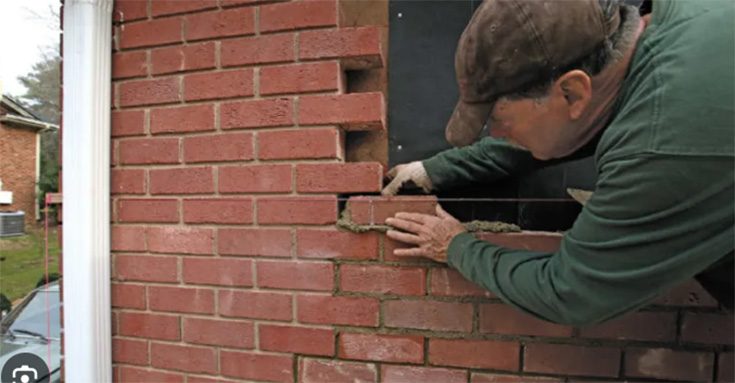
Reason #2 to keep a window in your shower or tub alcove– Eliminating natural light is dangerous and could be costly or even deadly (especially if you want to age in place) … and it’s your “family economy, stupid”, as a politician once said.
One of the harsh, cruel realities of aging is we don’t see as well as we used to (and this is coming from a 65 year old guy who swears he DOES NOT look a day over 64!). And since bathrooms (because they’re wet and slippery) are the most dangerous room in the house (and the one most likely to cause a fall) it’s important to keep it as light and bright as possible. Hence (and don’t you think hence is a funny word…..but I digress), keeping the window is smart.
In addition, if you still want to eliminate the window and bring light into another location (like through a skylight or solar wall tube) it’ll likely to be significantly more expensive than choosing a better window which fits your existing opening.
Reason #3 to keep a window in your shower or tub alcove– Depending on the type of window you choose, it can offer air flow and ventilation
While it’s true many new homes get moisture out through a ceiling vent – it’s also true there’s nothing like fresh air coming through a window to make a house smell better (and Ok, this IS assuming you don’t live next to a steel mill!).
Reason #4 to keep a window in your shower or tub alcove– The bathroom will feel more appealing
Dark spaces are depressing spaces. And when you allow light to stream into a bathroom (which often is a smaller room) it’ll help it feel bigger and more inviting. And using a window in a small space can allow you to use a trendy ‘moodier’ color like you’ll see in the laminate wall panels below.
So – now that I’ve made my case (and no – I’ll admit I’m no Perry Mason – and yes, I know I’m showing my age with that reference…but if you’re curious who he is check out the video below – and this one is even a bit funny!), let’s check out Part A and how to choose the right window for your tub or shower alcove.
(Part A) How to choose the right window for your shower or tub alcove
If you’ve got a wood window which resembles Swiss cheese from the years of wood getting drenched in your shower, or you have a rusted metal window in your wet space, you know you DO NOT want to go down that road again. So, here’s 5 questions you should ask to make a sound tub or shower window selection.
Question #1– Should the shower or tub window be framed or frameless? And if it’s framed, what type of frame should you choose?
The problem with most tub or shower windows is usually not the glass (although they can get foggy if moisture gets between panes of glass…. but that’s usually the least of the worries). The real problem is the frame and trim around the window is rotted, rusty, or mold and mildew has become the windows’ B.F.F.
So, the question is how can you prevent these problems? Here’s 2 strategies:
- Strategy #1 – Go frameless – If you use a frameless glass block window (which is especially smart if you have masonry on the outside of the home) you can mortar a prefabricated glass block assembly in and eliminate a window frame.
- Strategy #2 – Choose a window frame which won’t rot or rust – The frame around the window is CRITICAL in a tub or shower window which isn’t near the ceiling or will come in Constant Contact (sound like an email provider) with water. It’s for this reason, if you want to use a framed window (which’ll give you the benefit of an operable window for air flow) smart choices include fiberglass or vinyl framed tub or shower windows. Their frames won’t rot or rust like wood and metal framed bathroom windows.
Question #2– What type of glass should I use for my tub or shower window? What shower glass window ideas will work?
When you look at the best type of glass to use for your tub or shower window it’s not a ‘one-size-fits-all’ answer.
However, the first question to ask, is privacy a concern? If you live in the country with a window on the second floor you may be fine putting in clear glass for your shower or tub surround window. Or if you live in a nudist colony (and do those even exist today?), let it all hang out!

However, the problem many people have in older homes which have double hung windows in a tub/shower alcove – is they really DO NOT want to put on a show for their neighbors or ‘show off’ their hot bod or ‘1 ½ pack abs (and yes, I know for most of us 6 pack abs are a pipe dream!)’ So, what privacy choices for shower or tub windows should you consider? Here’s some options:
- Glass block windows – They come in many high privacy patterns, and you can even use different block sizes and patterns to create one-of-a-kind designs.
- Use frosted glass in your windows – The frosted glass offers you the privacy without blocking light by framing over the window.
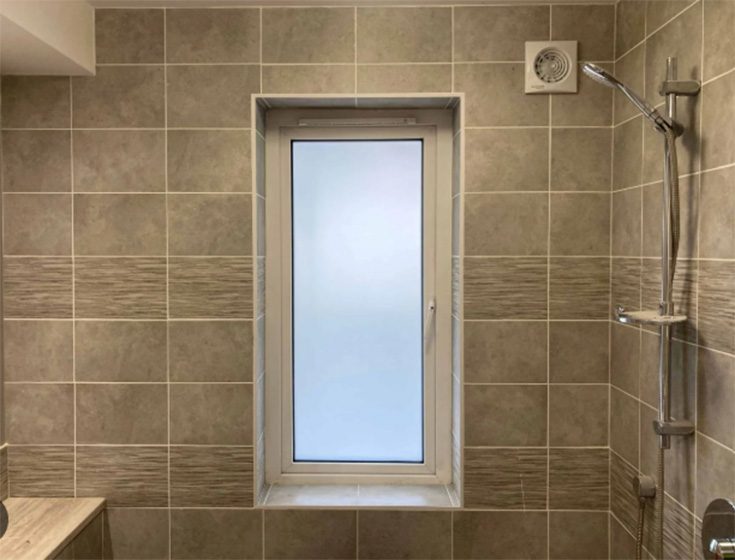
- Use an acrylic block window – Acrylic blocks not only offer the privacy of glass blocks, but since they’re lighter, they can give a ‘glass block look’ AND be an operable window.
- Decorative glass – There are many types of decorative glass which – unlike stained glass – you don’t have to worry about breaking down in a wet area.
- Clear glass windows with blinds inside the insulated glass panes – What’s nice about this option is you can get all the sunlight you’d like when you’re not showering, then close the blinds when you are.
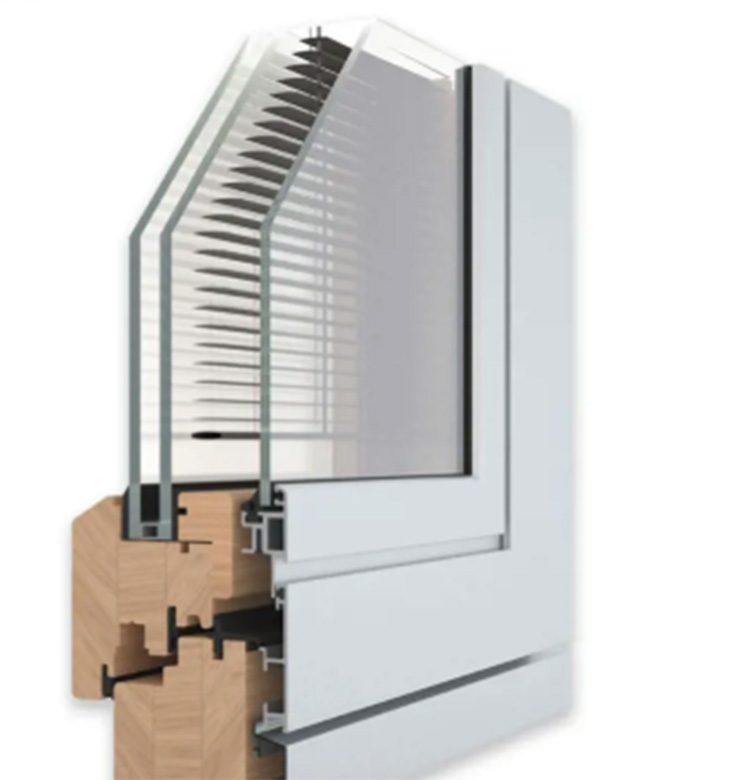
Question #3- Should the glass window be fixed or operable? And if it’s operable, what type of operable window is best?
While the simplest (and often least expensive) glass window will be one with no ‘moving parts’ (like a fixed glass picture or transom window or a glass block window), the ability to get fresh air into a bathroom is a nice feature. So, the question is do you want air flow or not.
And if you do want air flow, and your window has a ‘vertical’ orientation the best options are a casement window (which cranks out and uses the full opening), or a double hung window (both sashes open up and down), or a single hung window (only one sash opens).
If you want the least expensive vertical bathroom window choose the single hung window. However, being able to open the bottom and top sashes (with a double hung) is nice. And a double hung window can also be safer if you only open the top sash and keep the bottom closed so pets and kids can’t get out. And to maximize air flow the casement shower window is best because with its crank the full window can open.
And if your window has a horizontal orientation, and you want it to be operable, a sliding glass window is the choice.
Question #4- What’s the energy efficiency ratings of the window?
Before making a final selection ask about the energy efficiency rating for the tub or shower windows you’re considering and if they’re eligible for an Energy Efficiency Home Improvement Credit.
Question #5- What’s the cost of the shower or tub surround window?
Note if you’re independently wealthy skip over this question, otherwise it’ll be one you’ll want to understand. And you’ll not only want to know the cost of the window – but also the cost to install the window – which in some cases is tricky especially with windows on the second and third story or ones that are difficult to access.
So, before you buy a window make sure you not only what it’ll cost, but you have a contractor (or a game plan to DIY the install) so you know your ‘all-in’ costs. And don’t be fooled by window pricing gimmicks. The ‘BOGO’ ads and claims of ‘Free Installations.’ And anyways, do you actually believe anyone’s employees are working for free?
As my dad used to tell me, “Michael, a good deal today will be a good deal tomorrow.” Don’t succumb to the ‘buy today’ pressure of the ‘Tin-Men-Esque’ window reps. And just for fun included a scene from Tin Men with Danny DeVito below.
And while it’s important to select the right window for your shower – it’s equally important to use the right materials around the window – including the wall surrounds, sealant, and trim to make sure the window performs well over the long run. And given this let’s look in Part B at the right materials to waterproof around your shower or tub alcove window.
(Part B) How to choose the right materials to surround a waterproof window in a shower or tub alcove
There are many approaches to waterproof around the window options discussed in Part A. And while choosing the right window is critical – it’s not the only thing to pay attention to for a successful tub or shower window installation. No, you also need to choose the right materials to go around the window. This includes the following:
#1) Choose the best wall surround system to go around your window
While you could choose a perfectly good window – if the wall materials surrounding the window leak like a sieve, you’ll still have problems. So, the more effectively your wall surrounds are waterproofed the better.
One smart way to do this – and to minimize maintenance is to choose grout free wall panels. I like 3/8” thick laminate wall panels because they can be cut to fit any sized window, they look like real tile or stone, and because you can use the ‘off-cuts’ to trim the window, they’re cost-effective.
However, if you do choose tile, make sure to use a high quality waterproof backer board like Wedi or Schluter behind the wall. And also pay attention to the transition strips and sealant between the flat tile wall and the tiles which return to the window.
#2) Choose an effective (yet not tacky) window trim kit
Great care needs to be taken to not only waterproof around the sides of the window (between the flat wall surface and the window) – but also to choose a system which is water-tight and doesn’t cheapen your tub or shower wall and window installation.
Options include:
- Acrylic window trim kits (which are effective but look cheap and plasticky IMHO)
- Solid surface window trim kits (they’re built from engineered stone, so they won’t absorb water)
- Window trim kits which include aluminum trim profiles paired with solid surface sills, and laminate wall panels (they’re a cost-effective trim kit, yet look realistic).
Make sure the bottom of the window has a waterproof sill which is sloped towards the tub or shower pan so water doesn’t get underneath the window. That can become a B-I-G problem!
#3) Choose the best sealant possible where the window meets the trim kit and/or wall surround
Oh, if only there was a ‘lifetime sealant’ which was guaranteed to last forever! And I’ve told many people the guy/gal who invents this product will be VEEEERRRRY rich! However, I don’t know of this dream sealant yet, but when it is available, we’ll be the first one to stock it! In the meantime, the question is what sealant should you use which will be as long-lasting as is available today?
What’s generally recommended around shower and tub windows are 100% silicone sealants. They’re waterproof, mold and mildew resistant, flexible and will bond well to glass and various types of wall surrounds.
![]()
#4) DO NOT choose curtains as your window ‘waterproofing’ solution
While curtains can minimize water in and around the window, they defeat many reasons to have a window in the first place. They are to let light in, make a safer bathroom, and ventilate the bathroom.
Its for this reason I’d avoid curtains in front of tub or shower windows like the plague. And this is even ignoring the fact they WILL NOT help you win any fashion awards! Curtains in front of shower windows ARE NOT the chichi style statement of the rich and famous.
So, are you now a ‘fan’ or ‘foe’ of a window for a tub or shower alcove remodel? Are you more comfortable how to remodel a bathroom with a window in the shower or tub alcove?
In the beginning of this article, I told you I was a ‘fan’ of shower and tub windows (of course that’s assuming they’re done right!). After reading this article do you agree with me – or do you think I’m all ‘washed up’ (bad shower pun intended!). Comment below with your opinions and questions.
If you need input or pricing to do a window in your tub or shower alcove call a Bathroom Specialist at Innovate Building Solutions (and yes, I’ll fess up and tell you that’s my company). And while you’re at it you can also ask about shower pans, walls panels, tubs, glass doors, you name it.
Call 877-668-5888 or request a Free Consultation.
And if you’re a bathroom contractor, a kitchen and bath showroom, or multi-unit property owner (or buyer) looking to purchase shower kits, shower walls, or alcove bathtubs call me at 888-467-7488 or visit the wall panel dealership or multi-unit wall panel supply areas of our site.
And lastly if you’re looking for an Akron or Cleveland bathroom remodeling contractor to professionally supply and install your shower window, or tub to shower conversion call 216-531-6085.
Thanks for reading and learning about shower and tub alcove windows. Let me and my team know if we can help further.
Mike
